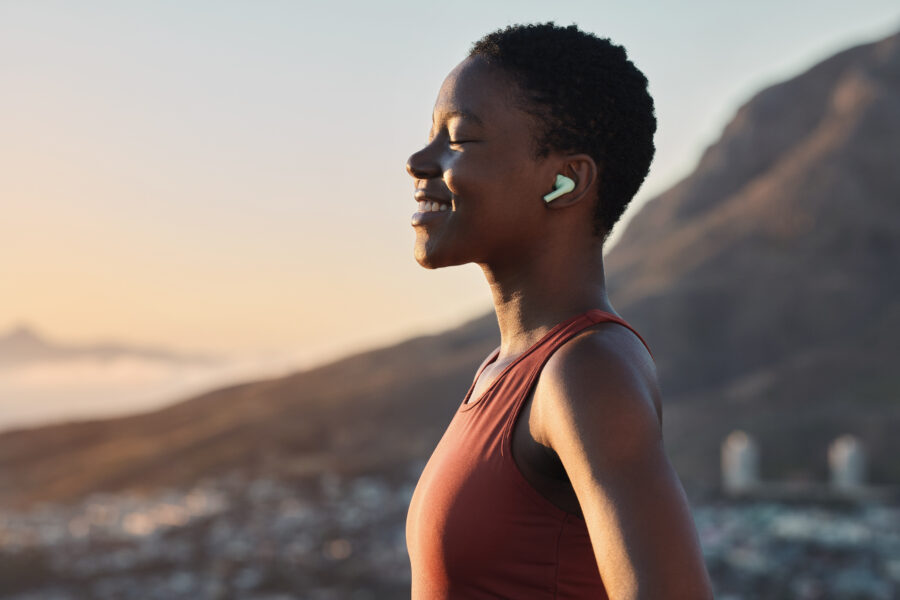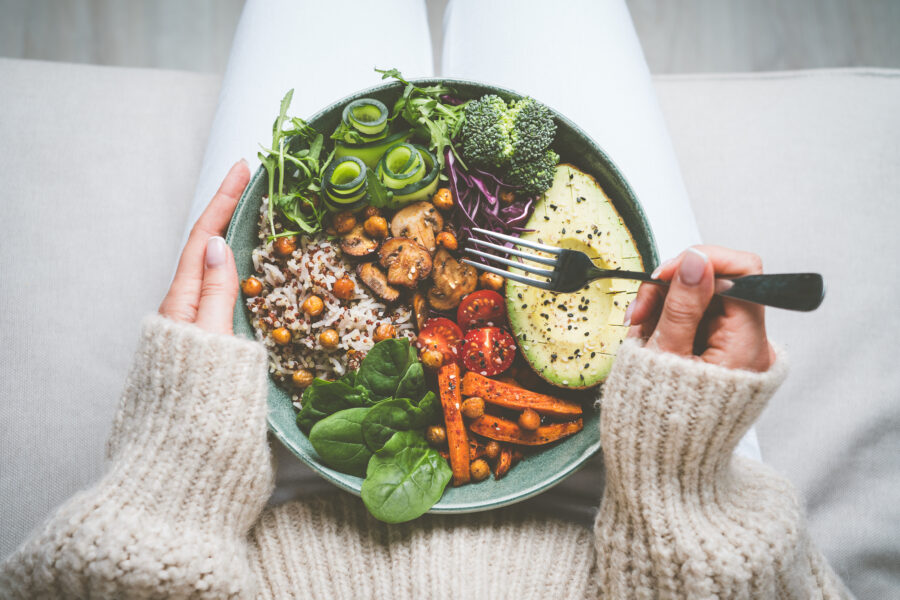The concept of self-care has evolved dramatically over the years. In 2025, it’s no longer just about managing stress or indulging in occasional luxuries—it’s a proactive and intentional commitment to fostering optimal health and well-being. True self-care goes beyond surface-level fixes, addressing the root causes of dysfunction and empowering the body’s natural ability to heal and thrive.
This guide explores a comprehensive approach to self-care, built on principles that prioritize balance, prevention, and holistic health. By focusing on foundational practices like spinal health, proper nutrition, restorative sleep, and daily movement, this guide provides actionable steps to help you achieve long-lasting vitality.
The History of Self-Care
The history of self-care has its roots in natural healing traditions that date back centuries. Early practices emphasized the body’s innate ability to heal itself when given the right conditions. Modern science now supports these principles, showing that aligning physical, emotional, and environmental factors can significantly enhance overall health.
In the late 19th century, chiropractic care emerged as a pivotal part of this movement, offering a natural, non-invasive approach to addressing the underlying causes of dysfunction. Over time, advancements in nutrition, exercise science, and stress management have expanded the scope of self-care, reinforcing the idea that true health requires a holistic approach.
What is Self-Care?
Self-care is the intentional practice of cultivating habits that support your physical, mental, and emotional well-being. It’s about taking an active role in your health, addressing the root causes of issues rather than masking symptoms. Core aspects of self-care include:
- Physical Alignment: Ensuring the body’s systems work together optimally.
- Nutritional Balance: Providing the body with the nutrients it needs to thrive.
- Mental Resilience: Managing stress and fostering a positive mindset.
- Environmental Awareness: Reducing exposure to toxins and creating a supportive environment.
In essence, self-care is not a luxury; it’s a necessity for maintaining long-term health and vitality.
Benefits of Self-Care
Self-care offers numerous benefits, supported by decades of research. By incorporating intentional practices into your life, you can:
- Reduce Stress and Anxiety: Mindful routines and healthy habits lower cortisol levels and enhance emotional stability.
- Improve Physical Health: Proper nutrition, exercise, and sleep strengthen the immune system and reduce the risk of chronic diseases.
- Boost Emotional Resilience: Self-care enables you to navigate challenges with greater ease and maintain positive relationships.
- Enhance Productivity: When your body and mind are cared for, you are better equipped to perform at your best.
- Support Longevity: Consistent self-care practices contribute to a longer, healthier life.
The cumulative effect of these benefits is a life that feels balanced, focused, and full of energy—a state of thriving rather than just surviving.
The Five Pillars of Self-Care
The First Pillar of Self-Care: Spinal Health
Why Spinal Health Matters
The spine plays a central role in overall health, acting as the body’s main communication highway. It houses and protects the spinal cord, which carries signals between the brain and the rest of the body. When the spine is out of alignment—a condition known as subluxation—it can disrupt these signals, leading to pain, dysfunction, and even systemic health issues.
Restoring and maintaining proper spinal alignment is essential for ensuring the body’s systems function as they should. This foundation of health supports everything from immune response to physical performance and emotional well-being.
Benefits of Caring for Your Spine
Investing in spinal health has wide-reaching benefits, including:
- Enhanced Nervous System Function: Proper alignment ensures efficient communication between the brain and body.
- Pain Management: Correcting misalignments addresses the root cause of discomfort rather than masking symptoms.
- Improved Posture: Good spinal health reduces strain on muscles and joints, preventing chronic issues.
- Boosted Immunity: A healthy spine supports the body’s natural defenses, promoting resilience against illness.
- Better Stress Management: Spinal alignment has been shown to reduce cortisol levels, helping you better handle daily challenges.
How to Prioritize Spinal Health
Incorporating spinal care into your self-care routine doesn’t have to be complicated. Consider these strategies:
- Schedule Regular Adjustments: Regular visits to a chiropractor can help correct misalignments and prevent future issues.
- Maintain Good Posture: Be mindful of your posture when sitting, standing, and using electronic devices.
- Practice Spinal Exercises: Incorporate stretches and core-strengthening exercises into your routine to support spinal health.
- Seek Expert Guidance: Your MaxLiving Chiropractor can provide personalized recommendations to help you maintain spinal alignment and overall well-being.
By making spinal health a priority, you create a solid foundation for all other aspects of self-care, setting the stage for a healthier, more balanced life.
The Second Pillar of Self-Care: Nutrition
The Foundation of Health
Nutrition is the cornerstone of vitality. What you consume provides the building blocks for your body to function, heal, and thrive. In 2025, advancements in dietary science have reinforced the importance of a personalized and intentional approach to nutrition. Proper nutrition not only fuels your body but also supports mental clarity, emotional balance, and resilience to illness.
However, it’s not just about what you eat—it’s about the quality and source of your food. Modern farming practices, environmental toxins, and processed foods have made it challenging to get the nutrients your body needs. This makes intentional eating and supplementation more important than ever.
The Principles of Nutritional Balance
A balanced diet should focus on whole, natural foods that provide essential nutrients. Here are the core principles:
- Clean Proteins: Choose lean, high-quality sources such as organic chicken, grass-fed beef, wild-caught fish, or plant-based options like lentils and tempeh. Proteins are essential for muscle repair, immune function, and energy production.
- Healthy Fats: Incorporate fats from natural sources like avocados, nuts, seeds, and olive oil. Omega-3 fatty acids, found in fish and flaxseeds, are particularly important for brain and heart health.
- Abundant Vegetables: Prioritize leafy greens like kale, spinach, and broccoli, as well as colorful vegetables like bell peppers and carrots. These foods are rich in antioxidants, fiber, and essential vitamins.
- Minimized Sugars and Processed Foods: Avoid artificial additives, refined sugars, and processed ingredients that contribute to inflammation and energy crashes.
- Hydration: Drink plenty of purified water throughout the day. Proper hydration aids digestion, circulation, and detoxification.
Personalized Nutrition for 2025
Advances in technology now allow for personalized dietary plans tailored to your genetic makeup and gut microbiome. These customized approaches ensure that your body gets exactly what it needs. For example:
- Microbiome Testing: Reveals how your gut health affects digestion, immunity, and mood, allowing you to adjust your diet accordingly.
- Genetic Testing: Identifies how your body metabolizes nutrients, helping you avoid foods that don’t align with your physiology.
Integrating these insights into your diet helps optimize energy levels, reduce chronic inflammation, and promote overall well-being.
The Role of Nutritional Supplements
Even with the best diet, environmental factors such as depleted soil nutrients and exposure to toxins can create gaps in your nutrition. High-quality supplements bridge these gaps, ensuring your body has the resources it needs to function at its best.
Key supplements to consider include:
- Multivitamins: Provide a broad spectrum of essential nutrients.
- Probiotics: Support gut health and improve digestion.
- Omega-3 Fatty Acids: Promote heart and brain health.
- Vitamin D: Essential for bone health, immunity, and mood regulation.
- Adaptogens: Herbs like ashwagandha and rhodiola reduce stress and improve energy levels.
Your MaxLiving Chiropractor can help you choose the nutritional supplements that best suit your needs.
Practical Tips for Better Nutrition
To make nutrition a sustainable part of your self-care routine, follow these strategies:
- Meal Prep: Plan and prepare your meals in advance to ensure you’re meeting your nutritional goals during busy weeks.
- Read Labels: Avoid foods with artificial ingredients, added sugars, or hydrogenated oils.
- Shop Smart: Focus on the perimeter of the grocery store, where fresh produce, proteins, and whole foods are typically found.
- Start Small: Make gradual changes, like adding a serving of vegetables to each meal or replacing sugary drinks with water.
- Stay Informed: Keep up with the latest research and consult professionals to optimize your diet.
By prioritizing nutrient-dense foods and supplementing wisely, you’ll build a strong foundation for health that supports every other aspect of self-care.
The Third Pillar of Self-Care: Mindset
The Power of a Healthy Mindset
Your mindset shapes how you approach every aspect of life, including health. In 2025, we understand more than ever how mental patterns, beliefs, and attitudes impact physical well-being. A positive, proactive mindset not only helps you navigate life’s challenges but also enhances your ability to make better decisions about your health, relationships, and goals.
Self-care begins in the mind. Cultivating a healthy mindset helps reduce stress, foster emotional resilience, and create a sense of purpose and balance. This isn’t about forced positivity but rather about learning to frame situations in ways that empower you to thrive.
Mindset and Its Impact on Health
Research continues to highlight the deep connection between mental and physical health. A healthy mindset supports:
- Stress Reduction: Positive thought patterns reduce cortisol levels, decreasing the risk of stress-related illnesses.
- Emotional Resilience: A proactive approach helps you bounce back from setbacks with greater ease.
- Better Decision-Making: Clarity of mind encourages healthier choices in diet, exercise, and relationships.
- Physical Recovery: Studies show that optimism and gratitude can accelerate healing processes.
When your mind is at peace, your body benefits too.
Strategies to Cultivate a Healthy Mindset
Adopting a mindset of growth and positivity requires intentional effort. Here are some proven strategies to integrate into your self-care routine:
1. Practice Gratitude
Start each day by reflecting on three things you’re grateful for. This simple habit shifts your focus from problems to blessings, fostering a more optimistic outlook.
2. Embrace Mindfulness
Mindfulness involves being present in the moment without judgment. Techniques such as meditation, deep breathing, or mindful walking can help you reduce stress and improve mental clarity.
3. Reframe Negative Thoughts
When faced with challenges, practice reframing negative thoughts into constructive ones. Instead of “I can’t do this,” try “I’ll find a way to overcome this.”
4. Set Achievable Goals
Breaking larger goals into smaller, actionable steps helps you stay focused and motivated. Celebrate progress to reinforce your sense of achievement.
5. Surround Yourself with Positivity
Build a support system of people who uplift and encourage you. Limit time spent with those who drain your energy or reinforce negative patterns.
6. Limit Digital Overload
Excessive time spent on social media or news can increase anxiety and foster a sense of inadequacy. Set boundaries for digital consumption to protect your mental health.
Mindset Practices for 2025
Advancements in mental health science have introduced innovative ways to support a positive mindset:
- Digital Tools for Mental Health: Apps for meditation, journaling, and cognitive behavioral therapy (CBT) have become widely accessible and effective.
- Neuroplasticity Exercises: Practices like visualization and affirmations help rewire the brain for positive thinking.
- Nature Therapy: Studies confirm that spending time outdoors reduces stress and improves mood.
Incorporating these practices into your routine can lead to profound improvements in both mental and physical health.
When to Seek Professional Support
Sometimes, maintaining a healthy mindset requires external support. Therapy, counseling, or coaching can be invaluable for navigating difficult periods or addressing long-standing mental patterns. If you’re feeling overwhelmed, know that reaching out for help is a sign of strength, not weakness.
Making Mindset Part of Your Self-Care Routine
Here’s how you can integrate mindset practices into your daily life:
- Morning Rituals: Begin your day with affirmations, a few minutes of meditation, or journaling your goals.
- Evening Reflections: End the day by noting what went well and identifying areas for improvement.
- Daily Breaks: Incorporate brief moments of mindfulness during your workday to stay grounded and focused.
- Connect with Others: Share your thoughts and emotions with trusted friends or family to process challenges constructively.
A healthy mindset is the cornerstone of self-care. By prioritizing your mental well-being, you empower yourself to face life’s challenges with confidence and grace, creating a ripple effect of positivity throughout your health and relationships.
The Fourth Pillar of Self-Care: Oxygen & Exercise
The Role of Movement and Oxygenation
Physical activity is more than just a tool for weight management—it’s essential for building strength, boosting energy, and enhancing resilience. Exercise delivers vital oxygen to your body’s tissues, supporting cellular repair, reducing inflammation, and improving overall function. In 2025, the emphasis on exercise has evolved to include activities that not only enhance physical fitness but also nurture mental clarity and emotional well-being.
The connection between oxygen and health cannot be overstated. Proper oxygenation supports every bodily system, from the brain to the immune system, and regular movement ensures this process is efficient and effective.
The Benefits of Exercise and Oxygenation
Engaging in regular physical activity provides profound benefits, including:
- Enhanced Energy Levels: Increased oxygen delivery improves stamina and reduces fatigue.
- Mental Clarity: Exercise stimulates the release of endorphins and serotonin, enhancing mood and focus.
- Stronger Immunity: Physical activity boosts the production of immune cells, reducing susceptibility to illness.
- Stress Management: Movement serves as a natural outlet for tension, lowering cortisol levels and fostering relaxation.
- Improved Longevity: Exercise reduces the risk of chronic diseases, promoting a longer, healthier life.
Whether it’s a brisk walk, a yoga class, or a high-intensity interval training session, every form of movement contributes to your well-being.
Choosing the Right Activities for You
 The best exercise routine is one that you enjoy and can maintain consistently. Here are some key approaches to movement in 2025:
The best exercise routine is one that you enjoy and can maintain consistently. Here are some key approaches to movement in 2025:
1. Functional Fitness:
Exercises that mimic real-life movements (e.g., squats, lunges, lifting) help improve strength, coordination, and balance. These workouts are ideal for enhancing everyday performance and preventing injuries.
2. High-Intensity Interval Training (HIIT):
Short bursts of intense exercise followed by recovery periods improve cardiovascular health, burn fat, and build endurance.
3. Low-Impact Activities:
Swimming, cycling, or Pilates are excellent options for individuals with joint issues or those seeking gentler forms of exercise.
4. Outdoor Activities:
Hiking, running, or walking in nature combines the benefits of physical activity with the restorative effects of fresh air and sunlight.
5. Breathing-Focused Practices:
Yoga and tai chi integrate breathwork with movement, enhancing oxygen flow and promoting relaxation.
The Importance of Oxygenation
Beyond movement, intentional breathing practices play a key role in health. Controlled breathing exercises, such as diaphragmatic or “box” breathing, increase oxygen intake and improve lung capacity. These techniques are particularly beneficial for reducing stress and improving mental clarity.
Supporting Your Exercise Routine
To maximize the benefits of physical activity, pair it with practices that enhance recovery and support your body’s needs:
- Stay Hydrated: Drink water before, during, and after exercise to replenish fluids lost through sweat.
- Fuel Properly: Consume a balanced meal or snack with proteins, healthy fats, and carbohydrates to support energy and muscle recovery.
- Prioritize Recovery: Incorporate stretches, foam rolling, or massage to relieve tension and prevent soreness.
- Consider Supplements: Coenzyme Q10 (CoQ10) is particularly beneficial for supporting energy production and stamina. Your MaxLiving Chiropractor can guide you in choosing the right supplements for your needs.
Integrating Exercise into Your Routine
For a sustainable approach, focus on consistency over intensity. Here are some tips to help you stay active:
- Schedule Workouts: Treat exercise like an appointment and build it into your daily routine.
- Start Small: If you’re new to exercise, begin with short, simple activities and gradually increase duration and intensity.
- Find Accountability: Partner with a friend or join a class to stay motivated.
- Celebrate Progress: Track milestones and reward yourself for achievements, big or small.
Exercise is not a one-size-fits-all endeavor—it’s about finding what works for you and making movement an enjoyable part of your lifestyle.
The Fifth Pillar of Self-Care: Minimizing Toxins
The Hidden Impact of Toxins
In our modern world, we are surrounded by environmental toxins—from chemicals in household products to pollutants in the air and water. Over time, these toxins can accumulate in the body, interfering with its natural processes and contributing to chronic illnesses, fatigue, hormonal imbalances, and even mental health challenges.
Minimizing your exposure to harmful substances and supporting the body’s natural detoxification systems is a crucial aspect of self-care. By reducing toxic load, you create an environment where your body can function optimally, heal effectively, and maintain long-term vitality.
Types of Toxins and Their Sources
Toxins come from a variety of sources, many of which we encounter daily. These include:
- Environmental Pollutants: Airborne chemicals, heavy metals, and industrial waste.
- Household Products: Cleaning supplies, synthetic fragrances, and personal care items often contain harmful chemicals.
- Processed Foods: Additives, preservatives, and pesticides in food disrupt the body’s natural balance.
- Plastics and BPA: Found in packaging, bottles, and storage containers, these can leach harmful substances into food and water.
- Medications: While necessary in some cases, overuse or reliance on certain drugs can strain the liver and kidneys.
Understanding these sources helps you make informed choices to limit exposure.
Steps to Minimize Toxins
1. Choose Natural Alternatives
Replace conventional cleaning and personal care products with non-toxic, organic options. Look for labels that specify “fragrance-free,” “BPA-free,” or “paraben-free.”
2. Opt for Whole, Organic Foods
Reduce exposure to pesticides and chemicals by choosing organic produce, grass-fed meats, and wild-caught fish. Avoid highly processed foods and focus on whole, nutrient-dense meals.
3. Stay Hydrated with Clean Water
Ensure your drinking water is free of contaminants by using a high-quality water filter. Hydration supports the kidneys and liver in flushing out toxins.
4. Use Glass or Stainless Steel Containers
Eliminate plastics from your kitchen by switching to glass or stainless steel storage and drinking vessels.
5. Improve Indoor Air Quality
Minimize airborne toxins by using HEPA filters, avoiding synthetic air fresheners, and ventilating your living spaces regularly.
Supporting Your Body’s Natural Detox Processes
Your body has a built-in detoxification system involving the liver, kidneys, lungs, and skin. Supporting these systems enhances their ability to remove harmful substances:
- Increase Antioxidant Intake: Foods rich in antioxidants, like berries, leafy greens, and turmeric, protect against oxidative stress caused by toxins.
- Incorporate Detoxifying Foods: Garlic, ginger, and cruciferous vegetables (e.g., broccoli and cauliflower) support liver function.
- Sweat it Out: Activities like exercise and sauna sessions encourage toxin elimination through sweat.
- Practice Deep Breathing: Proper oxygenation aids the lungs in expelling airborne toxins.
- Consider Supplements: Milk thistle, activated charcoal, and chlorella can support the body’s detox pathways. Consult your MaxLiving Chiropractor for recommendations tailored to your needs.
Balancing Detox with Everyday Life
Detoxifying doesn’t have to be overwhelming. Small, consistent changes can make a big difference:
- Declutter Your Space: Remove unnecessary items that may harbor dust or chemicals.
- Start Slow: Replace one product or habit at a time to make the transition manageable.
- Stay Educated: Learn to read labels and research brands committed to sustainability and health.
- Build Habits: Make detox-friendly practices like drinking lemon water in the morning or using a natural deodorant part of your routine.
By reducing your toxic load, you’ll feel more energized, focused, and resilient in all areas of your life.
Minimizing toxins completes the foundation of self-care, ensuring your body is free from harmful substances that can hinder its natural processes. When combined with the pillars of spinal health, nutrition, mindset, and exercise, this approach empowers you to live a healthier, more balanced life in 2025 and beyond.
Other Types of Self-Care
Other examples of self-care include indulging in a hot, detox bath, an infrared healing sauna, or perhaps a lymphatic drainage massage – along with regular chiropractic adjustments. Whether you round out your self-care planner with a mani-pedi or a night out with the guys, one thing’s for sure, making self-care a priority will help keep you healthy, revitalized, focused, and ready for anything.
About the Author

Jini Cicero is a Los Angeles-based Strength and Conditioning Specialist with a bachelor’s degree in Kinesiology. With over 20 years of experience as a health, fitness, and nutraceutical professional, Jini is passionate about advancing natural medicine and optimal health. Whether she’s working with Hollywood celebrities or cancer patients, Jini uniquely combines exercise science, sports nutrition, and corrective exercise. As a speaker, presenter, and writer, her work has been featured in numerous publications, such as Shape, MindBodyGreen, and The L.A. Daily News.
References:
4, 5. https://www.ncbi.nlm.nih.gov/pmc/articles/PMC3603495/#B13







